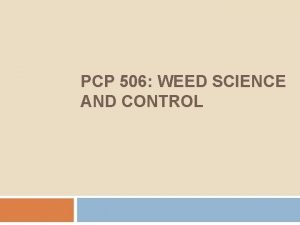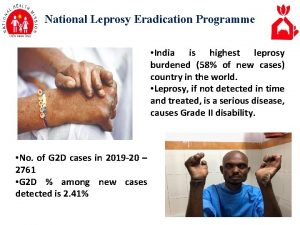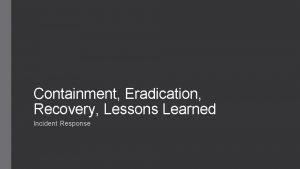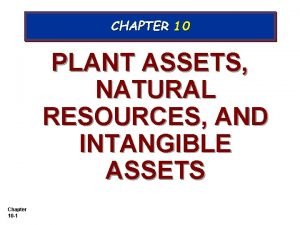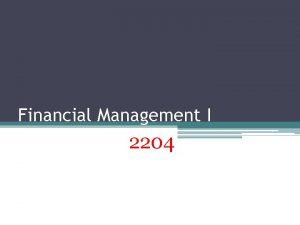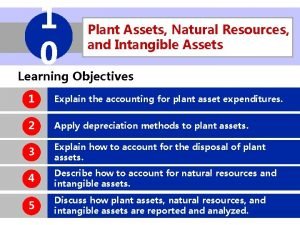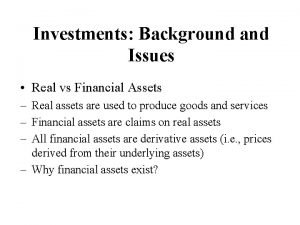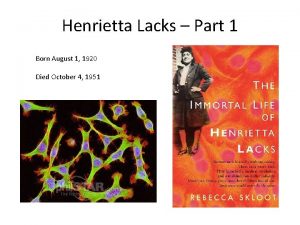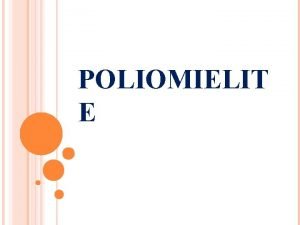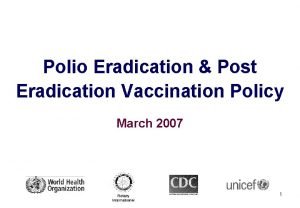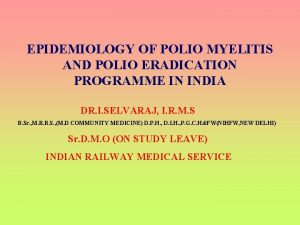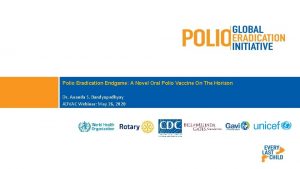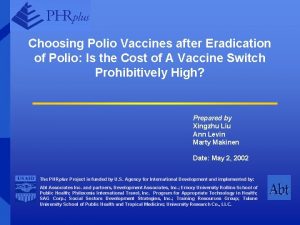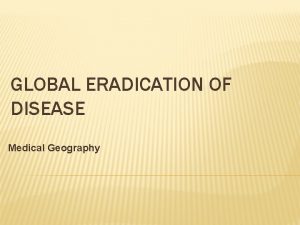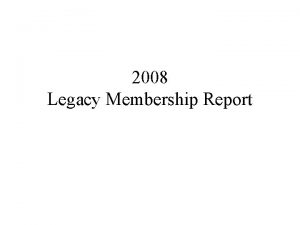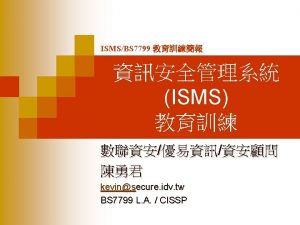Polio Eradication Legacy Planning Transitioning Polio Assets to














- Slides: 14

Polio Eradication Legacy Planning: Transitioning Polio Assets to Support MR and Routine Immunization Measles & Rubella Initiative Annual Meeting September 15 -16, 2015 A global partnership to stop measles & rubella

Polio Endgame Strategic Plan 2013 -18 • Objective 1 – Polio virus detection and interruption • Objective 2 – Immunization systems strengthening and OPV withdrawal • Objective 3 – Containment and certification • Objective 4 – Legacy planning “…ensure that the investments made to eradicate poliomyelitis contribute to future health goals, through a programme of work to systematically document and transition the knowledge, lessons learned and assets of the Global Polio Eradication Initiative… establishment of a comprehensive polio legacy strategic plan by no later than end-2015. ”

THE GPEI WORKFORCE (N=30, 000+) is focused in endemic and transitioning countries Millions of vaccinators Tens of thousands of local social mobilizers Thousands of skilled technical staff Hundreds of highly skilled technical managers/leaders Includes social mobilizers. Does not include vaccinators or regional/headquarters personnel. >1000 personnel >100 personnel >40 personnel >10 personnel 1+ personnel

Evidence Base – Contributions to other priorities Supporting Health Systems Estimated time allocation of polio workers 1 Other programs Disasters and crises Health systems strengthening MNCH, Nutrition Sanitation & Hygiene Child health days New vaccine intro 1% 2% 4% 4% 5% Critical activities and contributions of polio programme (not exhaustive) Routine Immunization 1% 1% National planning and local staff training Technical assistance Monitoring of field activities Communication and community engagement • Surveillance for vaccine preventable Routine immunization 26% Measles & rubella 12% Surveillance Supply Chain Polio • • diseases, e. g. measles, rubella, yellow fever, neo-natal tetanus, JE • Activities including front-line training, case detection, laboratory support and case reporting • Country supply chain management, e. g. – Vaccine procurement – Cold chain maintenance 43% Resources & Capacity Overall 1. Data based on survey of staff in DRC, Nepal, India, Somalia, and Ethiopia. Source: Polio Legacy Survey • Polio funds provide critical support to national and local WHO / UNICEF offices

Key Areas of GPEI Expertise Policy & strategy development Planning Management & oversight Implementation & service delivery Monitoring & evaluation Communications & community engagement Disease surveillance and data analysis Capacity building Partnerships & coordination

Examples of “Legacy-in Action” GPEI Legacy Planning

Building on the Polio Laboratory & Surveillance Network (>700 labs)

India -- Intensification of routine immunization Intensified Capacity building of RI monitoring frontline workers Accountability through Advocacy &Task Forces Tagging of HRAs to Integrated RI communication session sites 8

Polio network house to house monitoring data Percentage DPT 3 coverage 2011 2013 2014 100 82 80 70 87 86 85 83 86 74 60 40 20 0 N: Uttar Pradesh 244, 729 206, 844 Data Source : RI House to House monitoring data Bihar 107, 407 37, 377* * Bihar data as of May 2014 Madhya Pradesh 335 764 Rajasthan 823 1, 500

Polio Legacy Transition Planning Toolkit 1. Polio Legacy Transition Planning – Frequently Asked Questions 2. Polio Legacy Communication Slides 3. Transition Guidelines and Appendices 4. Lessons Learned -- an example (from the global perspective) of a Lessons Learned paper 5. India Lessons Learned and Transitioning (country example) 6. Lessons Learned Framework – Guidelines for documenting lessons learned at the country level GPEI website: (http: //www. polioeradication. org/Resourcelibrary/Resourcesforpolioeradicators. aspx). GPEI Legacy Planning

GPEI PRIORITIES FOR TRANSITION PLANNING in 2015 -2016 Raise awareness of the importance and urgency of transition planning amongst donors, country governments and other stakeholders. Ensure all countries that have been polio free for 12 months have established transition plans by Q 3 2016. Develop greater understanding of technical models, costs and financing mechanisms for successful transitions. Begin to rigorously capture the lessons learned from the polio eradication effort. Priority countries for GPEI transition planning: • • • Afghanistan Angola Chad DR Congo Ethiopia India Nigeria Pakistan Somalia South Sudan

Additional Short-list of Priority Countries • • • Bangladesh Cameroon Indonesia Myanmar Nepal Sudan GPEI Legacy Planning

Potential Country Transition Timelines Legacy transition phase 2014 PHASE COUNTRY EXAMPLES Transition planning underway DR Congo Nepal India All other polio-free and recent outbreak Current endemics Sudan Ethiopia Somalia S. Sudan Angola Bangladesh Indonesia Myanmar Cameroon Chad Nigeria Pakistan Afghanistan 2015 2016 WHA RCMs Planning & Decision 2017 2018 Stakeholder engagement needed to raise awareness of need for country-level planning Preparation & Execution Planning & Decision Preparation & Execution Timeline contingent upon eradication status POST GPEI

Achieving a World Without Measles and Rubella by connecting the dots 14
 Weed eradication definition
Weed eradication definition National leprosy eradication programme ppt
National leprosy eradication programme ppt Containment eradication
Containment eradication H pylori eradication therapy
H pylori eradication therapy Accumulated depreciation straight line method
Accumulated depreciation straight line method Real assets vs financial assets
Real assets vs financial assets Real assets versus financial assets
Real assets versus financial assets Real assets and financial assets ppt
Real assets and financial assets ppt Plant assets, natural resources, and intangible assets
Plant assets, natural resources, and intangible assets Plant assets are
Plant assets are Real assets vs financial assets
Real assets vs financial assets Liquidity planning and managing cash assets
Liquidity planning and managing cash assets Elsie lacks
Elsie lacks What is post polio syndrome
What is post polio syndrome Poliomielit
Poliomielit
